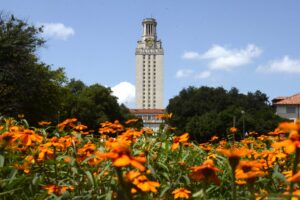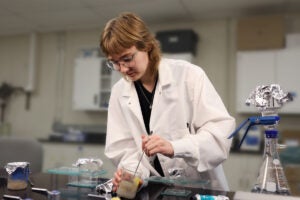AUSTIN, Texas—The University of Texas at Austin will prioritize the completion of fire and life safety improvements and critical building projects already under way in allocating its limited capital resources over the next three years, President Larry R. Faulkner said today (July 29).
“The university’s ability to financially deal with these issues was substantially impaired as a result of the Texas attorney general’s decision that voided the university’s proposed infrastructure charge,” Faulkner said.
In addition, he said the university will have significantly less financial resources to commit to the critical repair and renovation of existing buildings over the next three years.
“We anticipate spending what we have historically spent, about $13 million annually, in contrast to what we anticipate we need to spend annually to maintain our buildings, which is in the range of $30-35 million,” Faulkner said. “This means our list of repair and renovation projects deferred to future years will grow well beyond our means to financially deal with them, given our present financial outlook.
“We have reduced our capital and repair and renovation projects to absolutely what must be done.”
Faulkner outlined a $137 million capital budget that included:
- $23 million to address fire and life safety issues in the Frank C. Erwin Center, Austin’s largest indoor public venue, and other campus buildings;
- $21 million to complete a wet laboratory science building already under construction;
- $35 million to renovate a wing of the Experimental Science Building to provide space for research in nanoscience and repair serious water control problems;
- $28 million for construction of the Jack S. Blanton Museum of Art which was displaced by the Harry Ransom Humanities Research Center collections; and
- $30 million for the first-phase renovation of the Benedict, Mezes and Batts buildings, some of the university’s oldest in the center of campus.
The capital and repair and renovation projects will be funded principally from bonding designated tuition, which is expected to generate about $92 million of the total need. The university will also commit about $28 million of business contingency funds to these projects over the next three years. In addition, the annual repair and renovations budget of about $13 million per year will include $4 million per year from contingency funds. The total impact on contingency funds over the next three years is more than $40 million.
“Committing university contingency funds and bonding designated tuition more so than we have historically been comfortable with will severely limit the university’s future financial flexibility,” Faulkner said, “because bonding ties up these funds for 20 years and our contingency funds have been our safety net for use in case of a catastrophic event on campus, such as fire or flooding.”
Texas Attorney General John Cornyn ruled on July 9 the university’s proposed student infrastructure charge could not be levied to the extent that it duplicated a building use fee first introduced in 1969. The university, noting it would be difficult to clearly define the differences between repair and renovation projects and capital projects, said on July 16 it would not seek to redefine the charge.
For more information contact: Don Hale, 512-471-3151.



